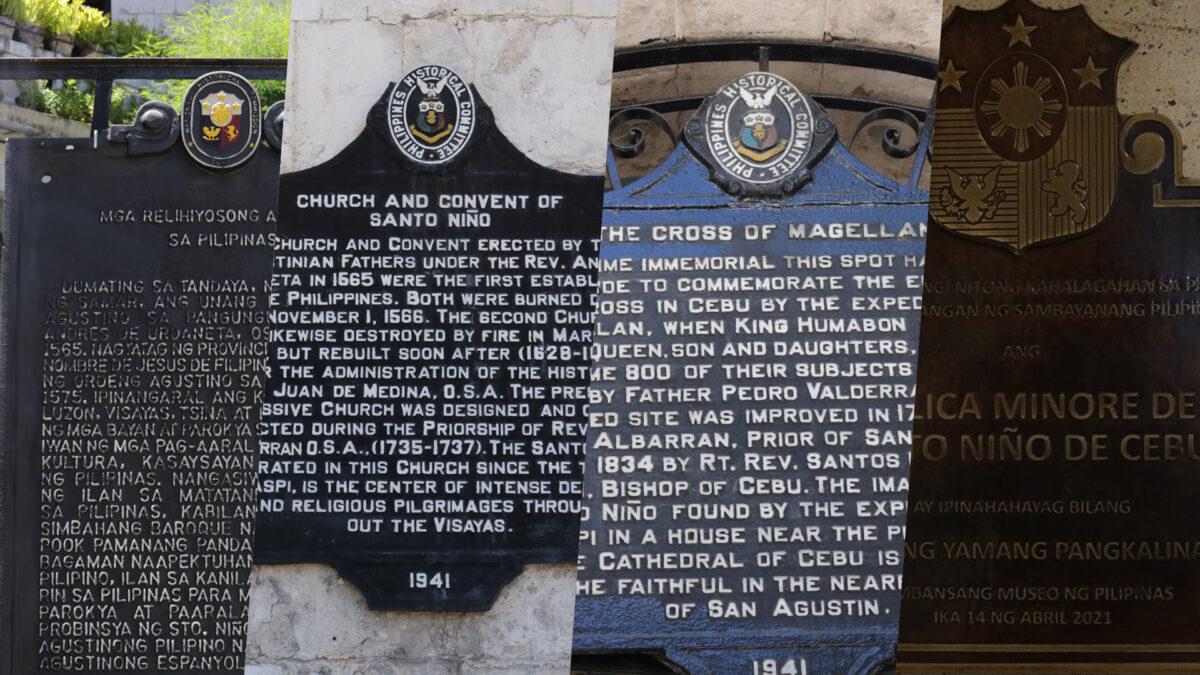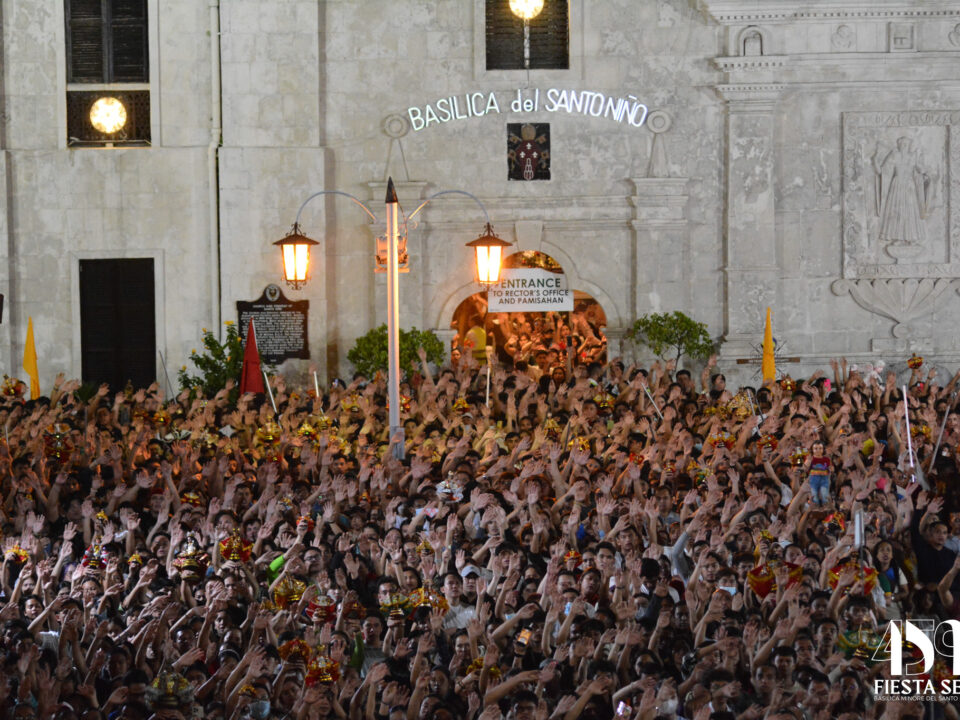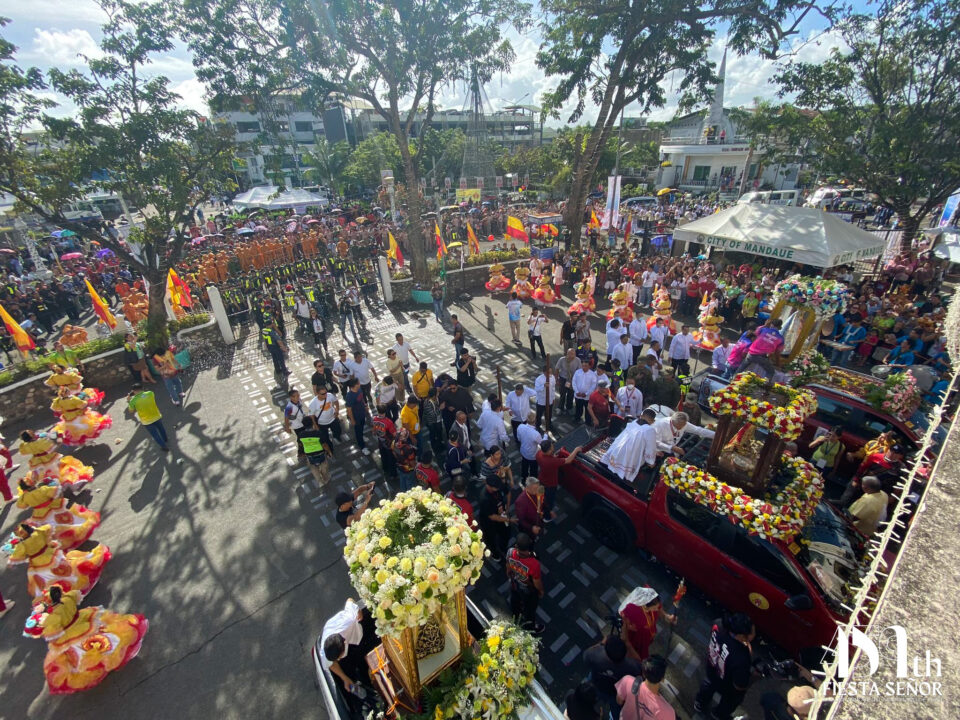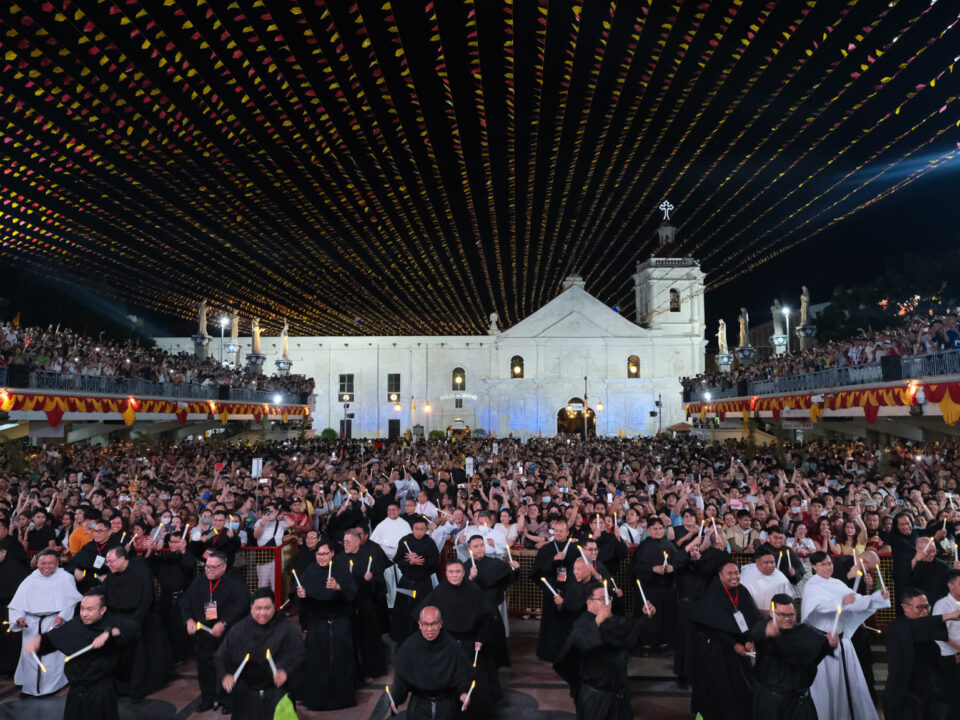The Four Historical Markers of the Basilica

Historical Markers at the Basilica Minore del Santo Niño de Cebu
In the 500-year history of Christianity in the Philippines, the Philippine Government has put up four historical markers inside and outside the Basilica Minore del Santo Niño de Cebu, honouring its contributions to the Filipino people and society. Here are the four historical markers granted that can be found in the complex of the Basilica.
1. CHURCH AND CONVENT OF SANTO NIÑO (1941)
Text:
“The Church and Convent erected by the Augustinian Fathers under the Rev. Andres Urdaneta in 1565 were the first established in the Philippines. Both were burned down on November 1, 1566. The second church was likewise destroyed by fire in March of 1628. But rebuilt soon after (1628-1629) under the administration of the Historian Rev. Juan Medina, O.S.A. The present massive church was designed and constructed during the priorship of Rev. Juan Albarran, O.S.A. (1735-1737). The Santo Niño, venerated in this church since the time of Legazpi, is the center of intense devotion and religious pilgrimages throughout the Visayas.”
Government Institution: Philippines Historical Committee (now National Historical Commission of the Philippines), 1941
Location: hanging at the left side of the Porta Minor of the Basilica Church
2. THE CROSS OF MAGELLAN (1941)
Text:
“From time immemorial this spot has been set aside to commemorate the erection of a cross in Cebu by the expedition of Magellan. When King Humabon of Cebu and his Queen, son and daughters, together with some 800 of their subjects were baptized by Father Pedro Valderrama. This hallowed site was improved in 1735 by Rev. Juan Albarran, Prior of San Agustin and in 1834 by Rt. Rev. Santos Gomez Marañon, Bishop of Cebu. The image of Santo Niño found by the expedition of Legazpi in a house near the present site of the Cathedral of Cebu is venerated by the faithful in the nearby Church of San Agustin.”
Government Institution: Philippines Historical Committee, (now National Historical Commission of the Philippines),1941
Location: Hanging at the entrance of the Kiosk facing the Cebu City Hall
3. THE AUGUSTINIAN RELIGIOUS IN THE PHILIPPINES (2018)
Text:
“Mga Relihiyosong Agustino sa PilipinasDumating sa Tandaya, ngayo’y bahagi ng Samar, ang unang limang paring Agustino sa Pangunguna ni Padre Andres de Urdaneta, OSA, 13 Pebrero 1565. Nagtatag ng Provincial del Santisimo Nombre de Jesus de Filipinas na pinagtibay ng Ordeng Agustino sa Roma, 7 marso 1575. Ipinangaral ang Kristiyanismo sa Luzon, Visayas, Tsina at Hapon. Nagtatag ng mga bayan at parokya sa Pilipinas. Nag-iwan ng mga pag-aaral sa agham, wika, kultura, kasaysayan at kalikasan ng Pilipinas. Nangasiwa sa pagpapatayo ng ilan sa mga matatandang simbahan sa Pilipinas, kabilang ang apat na Simbahang Baroque na itinala bilang Pook Pamanang Pandaigdig ng UNESCO. Bagaman naapektuhan ng himagsikang Pilipino, ilan sa kanila ang nanatili pa rito sa Pilipinas para mangasiwa ng mga parokya at paaralan. Itinatag ang Probinsya ng Sto. Niño de Cebu ng mga Agustinong Pilipino na hiwalay sa mga Agustinong Espanyol, 1983.”
Translation:
Arrived in Tandaya, now part of Samar, the first five Augustinian priests led by Father Andres de Urdaneta, OSA, 13 February 1565. Founded the Provincial del Santisimo Nombre de Jesus de Filipinas ratified by the Augustinian Order in Rome, 7 March 1575. Christianity preached in Luzon, Visayas, China and Japan. Established towns and parishes in the Philippines. Left studies in Philippine science, language, culture, history and nature. Supervised the construction of some of the oldest churches in the Philippines, including four Baroque Churches listed as UNESCO World Heritage Sites. Although affected by the Philippine revolution, some of them remained here in the Philippines to oversee parishes and schools. The Province of Sto. Niño de Cebu of the Filipino Augustinians separate from the Spanish Augustinians, 1983.
Government Institution: National Historical Commission, 2018.
Date of Unveiling: August 8, 2018
Location: Inner Garden of the Convento de Santo Niño
4. NATIONAL CULTURAL TREASURE (2021)
Text:
“Hinggil sa natatangi nitong kahalagahan sa Pamanang pangkalinangan ng Sambayang Pilipino and Basilica Minore del Santo Niño de Cebu ay ipinahahayag bilang PAMBANSANG YAMANG PANGKALINANGAN.
Pambansang Museo ng Pilipinas”
Translation:
Regarding its unique importance to the cultural heritage of the Filipino people and the Basilica Minore del Santo Niño de Cebu is declared as a NATIONAL CULTURAL TREASURE. National Museum of the Philippines
Government Institution: National Museum of the Philippines
Date of Unveiling: April 14, 2021
Location: Hanging on the left side of the arch from entering the Porta Minor.
Compiled by: FGPL





